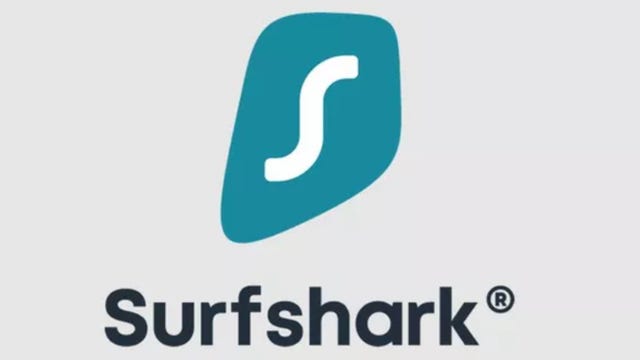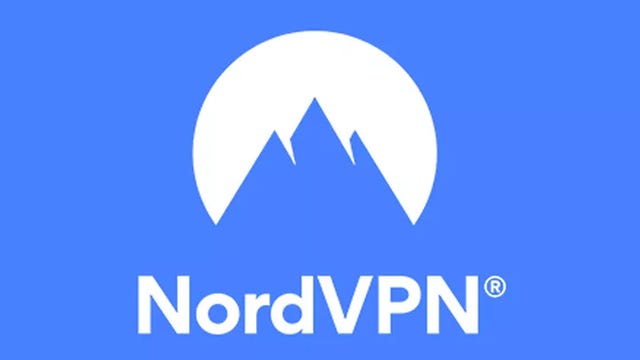Technologies
Best VPN for Amazon Fire TV Stick in 2023
Turn any TV into a smart TV and stream content with privacy using one of the best VPNs for Fire TV Stick.
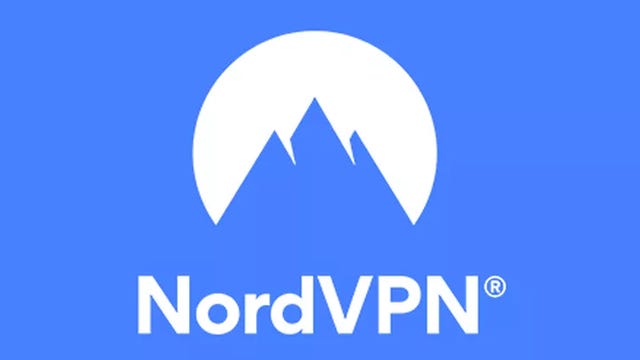
Not every television comes packed with all the top streaming apps, but with a handy device like Amazon’s Fire TV Stick, you can turn almost any TV into a smart TV. Simply by plugging the device in to your TV, you can easily access streaming services like Netflix, Disney Plus, HBO Max, Hulu and Amazon Prime Video, along with live TV, apps and games. There’s a lot you can do with a Fire TV Stick, but to get the most out of the device and maintain your privacy while doing so, you’ll want to pair it with a VPN, short for «virtual private network.»
The Fire TV Stick, as well as TVs that have the Amazon Fire TV system operating system built into them, have a distinct advantage over other streaming products such as Apple TV and Roku. Fire TV is the only major platform to support VPNs built into its online store. You can download and run a VPN alongside most of the streaming services listed above.
After hooking up the device to a television, you can use your VPN to avoid ISP throttling and get around geoblocks while streaming content or gaming (whether you’re at home or traveling abroad), without the need for VPN-compatible routers or complicated home network setups. And with prices as low as $30 for Fire Stick hardware, it remains the easiest way to set up a VPN on your smart TV.
Remember to check local laws and verify that VPN use is permitted by the terms of service with your internet service provider.
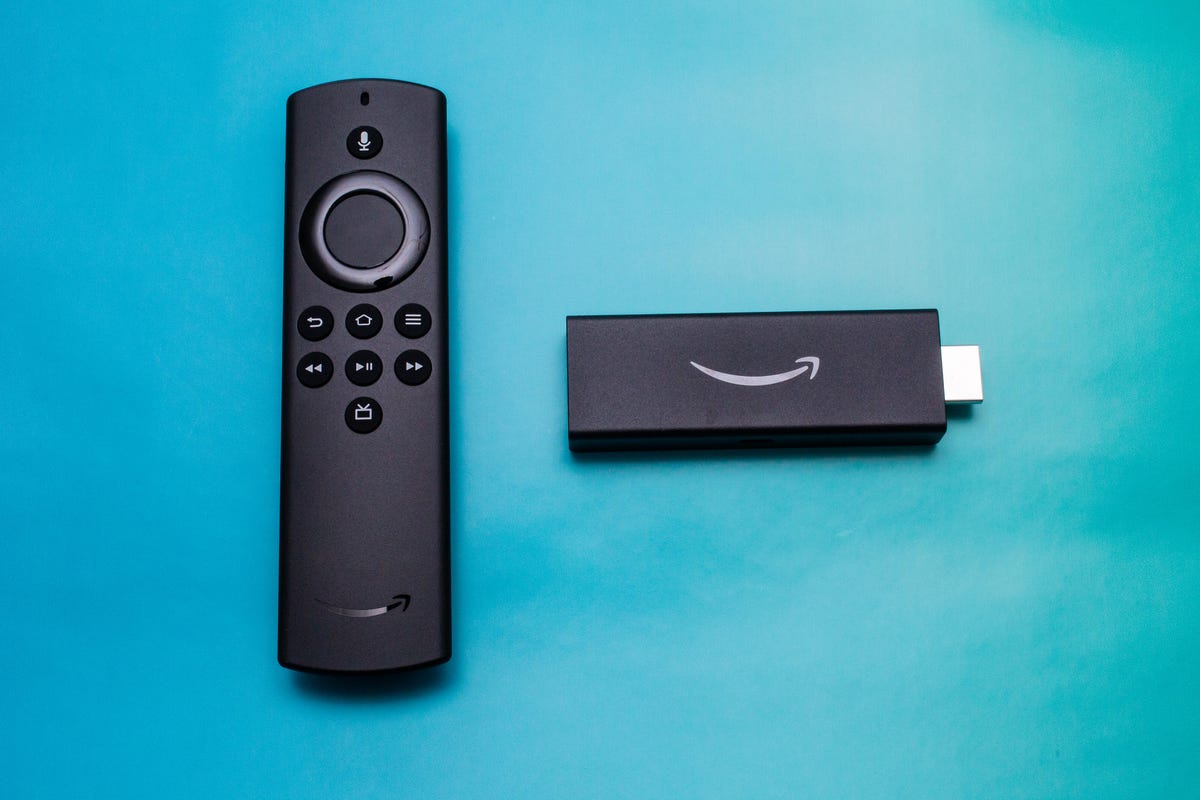
You can use a VPN with your Amazon Fire TV Stick to protect your privacy and get past streaming geoblocking.
How we tested VPNs on Fire TV Stick
Each of CNET’s top VPNs offers a native VPN app for the Fire TV Stick, but a few of them stood out during our tests. In addition to evaluating the usability and features of the Fire TV Stick VPN apps, we prioritized other important factors like security, speed and unblocking capabilities of each VPN we tested.
We opened each app on the Fire TV Stick and first tried to get a sense of the usability and the features available. Is the app easy to navigate and are the servers accessible? Are the features useful, organized and simple to access?
We then evaluated the overall performance of the app to see if the servers connected quickly, whether or not the connections were stable and how well the features performed. Finally, we tested how each VPN was able to provide access to various popular streaming services. Did the streaming services load up and start playing content quickly? Was the streaming experience smooth and absent of buffering? Was the VPN able to provide access to each streaming service we tested, and from multiple server locations? The VPNs that consistently passed these tests earned a spot among our top picks.
Best VPNs for Fire TV Stick
- Latest tests: No leaks detected, 2% speed loss in spring 2022 tests
- Network: 3,000-plus servers in 160 locations across 94 countries
- Jurisdiction: British Virgin Islands
- Price: 5 simultaneous connections for $13 per month, $60 for six months or $100 for a year (current discount: 3 months free). 2-year subscriptions available.
ExpressVPN is CNET’s Editors’ Choice for Best Overall VPN. It’s also the best VPN for Fire TV Stick because it’s super fast and secure, can reliably unblock content and has an excellent app that’s optimized for the Fire TV Stick.
The 2% speed loss we calculated in our spring 2022 tests helped catapult ExpressVPN to the top of our list of the fastest VPNs we’ve tested. Provided you’re getting decent speeds from your ISP, using ExpressVPN can help guarantee a smooth streaming experience whether you’re streaming in HD or 4K.
We didn’t experience any buffering issues during our tests, and all of the streaming channels loaded up and started playing immediately, seemingly unfettered by the VPN. We were able to stream content on Disney Plus, HBO Max, Amazon Prime Video and the US and UK Netflix libraries.
ExpressVPN’s app for Fire TV Stick is packed with features, yet nicely minimalistic and easy to navigate. The app includes features like auto-connect, kill switch, split tunneling and protocol selection, along with a DNS and WebRTC leak testing tool, IP address checker and even a password generator. One additional feature that’s pretty neat and useful is shortcuts, which lets you set shortcuts for five different apps. You can create shortcuts for any app you have on your Fire TV Stick like Neltifx, Hulu or a web browser, and launch the app directly from within the ExpressVPN interface after you’ve connected to the VPN.
The VPN provider has an impressive network of server locations that span 94 countries, meaning you’ll have plenty of options for unblocking content from all over the globe. When connected to ExpressVPN’s servers, your traffic is secured with industry-standard AES 256-bit encryption, which will keep your Fire TV Stick activity private.
ExpressVPN is the best VPN for Fire TV Stick, but it’s also the most expensive. Subscription plans are billed at $100 per year, $60 every six months or $13 a month. A 30-day money-back guarantee is available if you’re not satisfied with your purchase. Read our ExpressVPN review.
- Latest tests: Zero data leaks and 19% internet speed loss in fall 2022 tests
- Network: 3,200-plus in 100 countries
- Jurisdiction: Netherlands
- Price: Unlimited connections for $48 for the first year (then $60 annually) or $13 per month
Surfshark boasts an impressive suite of privacy and security features, unlimited simultaneous connections, easy-to-use interface and expansive global network. And it’s still significantly cheaper than most of its competitors. That’s what helped Surfshark earn CNET’s Editors’ Choice for Best Value VPN in 2022.
Along with standard VPN features such as a kill switch and DNS leak protection, some of the more notable Surfshark features include camouflage mode (which hides the fact you’re using a VPN), split-tunneling, NoBorders mode (which lets you use Surfshark in regions where VPNs are restricted) and multihop VPN connections. You’ll also get access to Surfshark’s CleanWeb technology, which blocks ads and malware and helps you avoid phishing attacks.
One innovation we’re excited to see Surfshark roll out over the next year is its Nexus network, which connects the VPN’s entire network of servers together and allows you to choose multiple servers to route your connection through. The functionality is somewhat similar to Tor, but Surfshark says it’s faster. With its Dynamic MultiHop, IP Randomizer and IP Rotator functions, the Nexus network can give you a few extra layers of protection while you use the VPN — which can be particularly beneficial to users with critical privacy needs.
Surfshark says it doesn’t log any user activity. And although no-logging claims are virtually impossible to prove with 100% certainty, German cybersecurity firm Cure53 declared Surfshark’s security to be «solid» in its 2021 security audit of the VPN. Surfshark says a new audit is forthcoming by the end of this year.
As of February 2022, both Surfshark and NordVPN have the same corporate parent (Tesonet), but Surfshark said it is legally bound not to share any information between the entities that would go against its privacy policy or terms of service. We didn’t find any language in either document that would indicate Surfshark has any obligation to share user data with its parent company or any sibling companies, which include NordVPN.
Surfshark rates consistently as one of the fastest VPNs available, which is why we were surprised that one of the only issues we had with Surfshark came in our speed test. While it still ranks as one of the fastest VPNs we’ve tested — with an internet speed loss of just 19% — we were disappointed with the inconsistent speed results we got to certain locations. Speeds to Europe and Singapore were erratic (dipping as low as 9Mbps to Singapore), while speeds to New York were slower than speeds to the UK and even Australia. Surfshark is in the process of significantly expanding its server network, now offering more than 3,200 servers in 99 countries. The continued expansion of its server network could potentially help bring some more consistency to VPN speeds.
In our tests, Surfshark had no problems unblocking Netflix and Amazon Prime Video content, but we did run into a fair bit of trouble accessing Disney Plus. After testing various servers in the US and other countries where Disney Plus is available, we were finally able to access the content when we connected to a server in Boston. You may need to test a few servers yourself before gaining access to Disney Plus content with Surfshark.
Surfshark offers cheaper introductory prices that jump after the first billing cycle. Even so, Surfshark manages to keep its prices lower than most other VPNs. The yearly plan starts out at $48 for the first year, then jumps to $60 for any additional years of service. If you opt for the two-year plan, you’ll pay $60 upfront for the initial two years combined, then $60 per year for any additional years. Surfshark’s monthly plan stays constant at $13 a month. If you’re not satisfied with the service for any reason, Surfshark offers a 30-day money-back guarantee.
- Latest tests: No leaks detected, 13% speed loss in summer 2022 tests
- Network: 5,600-plus servers in 84 locations across 60 countries
- Jurisdiction: Panama
- Price: 6 simultaneous connections for $12 per month or $67 for a year (current discount: 3 months free). 2-year subscriptions available.
NordVPN’s speeds weren’t quite as fast as ExpressVPN’s, but were faster than Surfshark’s, which helps make this VPN one of the top choices for streaming on a Fire TV Stick.
Streaming was smooth and easy whether we were watching content on Disney Plus, Amazon Prime Video or the US and UK Netflix libraries. NordVPN’s Fire TV Stick app interface is set up differently than the provider’s apps on other platforms, but the pertinent features are mostly accounted for and easy to access.
The app includes features like split-tunneling (which is useful if you don’t want all your Fire TV Stick apps to route through the VPN connection), auto-connect, protocol selection and threat protection lite (a malicious-website blocker). You can also connect to NordVPN’s Onion over VPN and double VPN servers if you want to add an extra layer of privacy to your Fire TV Stick activities. The one thing that’s missing from NordVPN’s Fire TV Stick app is a kill switch — an essential VPN feature that prevents your data from leaking unencrypted by cutting your internet should the VPN connection drop for any reason. The absence of that feature puts NordVPN lower on this list than ExpressVPN and Surfshark, which both offer it.
We noticed that the «Help us improve» setting in the app was enabled by default. If you don’t want to send aggregated anonymous data that could include «crash reports, OS version, marketing performance and feature usage data» over to NordVPN as you use its Fire TV Stick app, then be sure to disable it from the Settings menu.
NordVPN’s network offers more total servers (5,300-plus) than either ExpressVPN or Surfshark, but fewer countries (60), which could potentially limit the breadth of your streaming options. Like our other top picks, NordVPN encrypts VPN traffic using AES 256-bit encryption. NordVPN’s prices are lower overall than ExpressVPN, but more expensive than its sister company, Surfshark. The annual plan is priced at $100 per year (following the $60 introductory rate for the first year) or $12 per month. NordVPN offers a 30-day money-back guarantee on all subscription plans. Read our NordVPN review.
Other VPNs we tested on the Fire TV Stick
We also tested ProtonVPN and IPVanish on the Fire TV Stick. While both providers have native Fire TV Stick apps and are excellent options for various VPN use cases, they didn’t perform to our standards during our Fire TV Stick tests.
Proton VPN’s Fire TV Stick app is very basic and offers no options beyond connecting to a server or reporting an issue. It’s slow to connect and the overall app experience was clunky and awkward. Once we were finally able to connect to a server, we weren’t successful in our attempts to stream content from any streaming service. Oddly enough, it was when we tested Proton VPN’s free version on Fire TV Stick that we were able to access Netflix. Even though Proton VPN’s free tier is one of the only free VPNs that is actually worth using, it’s not optimized for streaming, so it may not always work for accessing geoblocked content.
IPVanish was a little better — the app included various settings and features to tool around with, but we weren’t able to stream UK Netflix or Amazon Prime Video. The automatic app launch feature allowing users to select an app to launch automatically after a successful connection is a nice addition and worked well in our testing when we set it to auto-launch Netflix. But besides that, there wasn’t much more to like about IPVanish’s performance on the Fire TV Stick in terms of features, and it failed to access some streaming services. We decided we couldn’t enthusiastically recommend it as a viable VPN solution for the Fire TV Stick.
We’ll continue to test these and other VPNs on the Fire TV Stick, so be sure to check back often.
Amazon Fire TV Stick VPN FAQs
How do I install a VPN on Amazon’s Fire TV Stick?
Installing a VPN on the Fire TV Stick is easy. You can either navigate to the magnifying glass search icon on your Fire TV home screen and use your remote or Fire TV app on your smartphone to type in the name of the VPN you want to download, or you can use the Alexa function on your Fire TV remote and say the name of the VPN. Then, click on the logo of your selected VPN and click on Get to initiate the download. Click on Open to launch the app and log into your account. Once you’ve logged in, your VPN will ask for your permission to set up a VPN connection. Click on OK to allow the VPN to create the connection. Once you’ve given your VPN permission to connect, you can start using the VPN on your Fire TV Stick.
Can I use a free VPN on the Fire TV Stick?
We don’t recommend using free VPNs on the Fire TV Stick (or in most other situations) because free VPNs typically impose usage and bandwidth restrictions that make them virtually unusable for streaming purposes. They also often sell user information to advertisers and can sometimes even contain malware. If you’re on a budget, we’d recommend choosing Surfshark as your Fire TV Stick VPN as it’s cheaper than a lot of the competition and works well on the streaming device.
Does VPN work on all Fire TV Stick generations?
No, VPNs are not compatible with the first generation of Fire TV Stick. VPNs work on second- and third-generation Fire TV Sticks as well as the Fire TV Stick 4K and 4K Max.
Can I use a VPN on Fire TV Cube?
Yes, Amazon’s Fire TV Cube has the same interface as the Fire TV Stick. You can install and use a VPN on the Fire TV Cube the same way you would on a Fire TV Stick. The Fire TV Cube acts as an Alexa speaker that delivers audio and allows you to use voice commands to control your Fire TV interface without having to press and hold the Alexa button on your remote.
More VPN recommendations
Technologies
Galaxy Z TriFold vs. Huawei Mate XT: One Is the Most Versatile Phone I’ve Ever Used
Samsung’s Galaxy Z TriFold and Huawei’s Mate XT, part of a new category of phones called «trifolds,» offer diverging experiences when it comes to using them.

Huawei introduced the world’s first «trifold» phone, the Mate XT Ultimate, last year and launched it outside of China in February 2025. Despite only actually folding in two places, the phone was called a trifold because its 10.2-inch display divides into three sections.
I’ve been using it on and off since February and I liked the Mate XT so much that it made me skeptical about the Galaxy Z TriFold‘s design when Samsung first showcased it at the APEC CEO Summit in October. But after trying Samsung’s first trifold for myself, during a brief hands-on test at a Samsung store in Dubai, I changed my mind.
As foldable phone sales are expected to rise 30% year over year in 2026, according to analysts at IDC, it’s important for both Samsung and Huawei to find their own hook for customers. Each of these foldable phones has their place in the market and offers a different appeal. One is a tablet that folds into a phone, while the other is a three-in-one and the most versatile smartphone I’ve ever used. One of them has «Z TriFold» in its name but the other actually folds in a «Z» shape.
Here’s how the newly-launched Samsung trifold phone compares to the Huawei Mate XT Ultimate — the phone that pioneered this category.
Samsung Galaxy Z TriFold vs. Huawei Mate XT design
Both the Galaxy Z TriFold and Mate XT have large screens that divide into three panels (hence the name) and have two hinges to connect them. And yet, they’re vastly different.
The Huawei trifold phone has a single screen that folds in a Z shape to allow for three different forms. You can use it as a phone (fully folded), a mini-tablet (half-open), as well as a wide-screen tablet (fully opened). I’ve mostly used the Mate XT either in mini-tablet mode (one fold) or fully unfolded. And I found myself using it in phone mode (fully closed) only when I made calls.
In comparison, the Galaxy Z TriFold folds in a U shape as both panels fold inwards. You can only use it fully folded as a phone or fully opened as a wide-screen tablet, without the added ability to use it as a mini tablet.
Samsung’s Z Trifold uses two different-sized hinges and three panels of varying thickness, allowing the device’s flaps to fold on top of one another. The left hinge is like the one on the Fold 7 and comparatively tighter than the right hinge (the wider one), which springs open after you push it to a certain angle. On the back of the phone is a second display that occupies the «middle» section to use when the phone is fully closed.
When fully folded, its lowermost panel has a protruding edge, giving it a solid lip to grab onto while unfolding. It’s a nice addition to the flat-sided design, which doesn’t leave much space between panels. I found it easier to unfold than its sibling, the flat-sided Galaxy Z Fold 7.
The Huawei Mate XT has curved sides and a single screen, but because of that Z shape, it gives you three ways to use it. The right hinge unfolds like the Galaxy Z TriFold — you pull it out — but you don’t need to unfold the other side. With just one panel unfolded, it becomes a usable mini-tablet.
You can unfold the third section, at the back of the left panel, to open it fully and use it as a wide-screen tablet. Because it uses a single flexible screen, part of the soft folding display is always exposed to the elements when the device is folded shut in phone mode. So far, I haven’t noticed any scratches on the display but it is definitely less protected than Samsung’s inner screen. However, Huawei bundles a case with an extended lip to protect the always-exposed right side of the screen.
Both of these trifold phones have minimal screen creases but Samsung’s Galaxy Z TriFold feels better when I run my finger over the folding parts. While Huawei’s creases are deeper, they don’t bother me in day-to-day use. The creases on both phones are visible under direct artificial light and at an extreme angle.
The Huawei Mate XT is slimmer than the Galaxy Z TriFold. It’s just 3.6mm thick at its thinnest part when fully unfolded and 12.8mm when folded. In comparison, the Samsung phone is 3.9mm thick at its thinnest part and goes up to 12.9mm when fully unfolded. At 309 grams, the Z TriFold is also slightly heavier than the 298g Mate XT.
The Huawei trifold phone feels more premium than the Galaxy Z TriFold — probably because of its faux leather back, curved sides and gold accents. Samsung’s foldable has a carbon-fiber finish, which feels durable but not as premium.
The Mate XT has an IPX8 rating, while the Galaxy Z TriFold is rated IP48 for dust and water resistance. The «4» in IP48 means it’s protected against dust particles measuring over 1mm but not against everyday dust and pocket lint. Neither of these phones is truly dust-proof, but both are rated for water resistance, just like a standard smartphone.
Samsung Galaxy Z TriFold vs. Huawei Mate XT displays
The Galaxy Z TriFold has two screens: a Galaxy Z Fold 7-like 6.5-inch AMOLED screen with a 120Hz variable refresh rate and a 422ppi pixel density. It unfolds to a 10-inch tablet-sized screen with a 120Hz dynamic refresh rate with a lower 269ppi pixel density.
The Huawei Mate XT has a single 10.2-inch OLED screen with a 90Hz refresh rate and 382ppi pixel density. It has a lower refresh rate but a higher resolution and slimmer bezels. You can use it as a 6.4-inch phone, a 7.9-inch mini-tablet or a 10.2-inch widescreen tablet which makes it a more versatile design than Samsung’s trifold phone. The Mate XT’s display when folded down into «cover screen» has a wider aspect ratio with slimmer bezels than the TriFold’s cover display.
I haven’t watched videos on the Galaxy Z TriFold, but I assume the experience would be better on the Huawei since the main screen has a wider aspect ratio (when fully unfolded). It has less letterboxing (thick borders on top and bottom) than the Galaxy Z TriFold, which provides a slightly narrower aspect ratio when fully unfolded. However, it could be better for multitasking, especially when running three apps side by side, but I’ll need more time with the Samsung phone to come to a conclusion.
Galaxy Z TriFold vs. Huawei Mate XT performance and battery
The Samsung Galaxy Z TriFold has the Qualcomm Snapdragon 8 Elite for Galaxy chip, the same processor that powers its other 2025 flagship smartphones including the OnePlus 15. The chip is tuned for efficiency and I expect it to handle multitasking on a standalone DeX with ease. The TriFold also comes with 16GB of RAM and 512GB or 1TB of storage.
In contrast, the Huawei Mate XT runs on an in-house Kirin 9010 chip and is paired with 16GB of RAM and 512GB or 1TB of storage. It runs EMUI 14.2 operating system on global variants, which doesn’t have preinstalled Google apps. Despite the ban on US companies working with Huawei — including Google, the company behind Android — there are workarounds for installing the Play Store. You won’t encounter these kinds of hurdles on the Galaxy Z Trifold.
The Samsung trifold phone runs on One UI 8, based on Android 16. You get fast animations, smooth multitasking, a multitude of customization options and a better overall experience. The Galaxy Z TriFold will also get seven years of OS and security updates.
Both phones pack a 5,600-mAh battery but it remains to be seen how they fare against each other. I haven’t pushed the Mate XT to its limits and it delivers an entire day of use on a single charge. When I need to top up the battery, I use the bundled 66-watt charger or use wireless charging at up to 55 watts. The Galaxy Z TriFold supports 45-watt fast charging and Qi wireless charging.
Samsung Galaxy Z TriFold vs. Huawei Mate XT cameras
Both phones have three rear cameras that are identical to those found in the Galaxy Z Fold 7. The Galaxy Z TriFold has:
- a 200-megapixel main camera with optical image stabilization (OIS) and a f/1.7 aperture
- a 12-megapixel ultrawide camera with a 120-degree field of view
- a 10-megapixel 3x optical zoom telephoto camera with OIS and support for 30x digital zoom
- two 10-megapixel front-facing cameras — one inside the cover display and the other inside the folding screen
In comparison, the Huawei Mate XT has:
- a 50-megapixel main camera with OIS and a variable aperture (f/1.4 — f/4.0)
- a 12-megapixel 5.5x optical zoom telephoto camera with OIS
- a 12-megapixel ultrawide camera with a 120-degree field of view
- a 8-megapixel selfie shooter
Based on my experience with the Fold 7, you can expect vibrant colors, good dynamic range and balanced processing in low-light photos on the Samsung trifold phone. Images from the Huawei tend to have an over-processed look and it doesn’t do well with certain skin tones. But the Mate XT captures better portraits than my Fold 7. I’ll be able to test the photography chops from both phones once I have the Galaxy Z TriFold.
Here’s how the two foldable phones specs compare:
Samsung Galaxy Z TriFold specs vs. Huawei Mate XT Ultimate
| Samsung Galaxy Z TriFold | Huawei Mate XT Ultimate | |
| Cover display size, tech, resolution, refresh rate | 6.5-inch AMOLED, 2,520×1,080 pixels, 1-120 Hz refresh rate | none |
| Internal display size, tech, resolution, refresh rate | 10.0 AMOLED, 2,160×1,584 pixels, 1-120 Hz refresh rate | 10.2-inch AMOLED, 3,184×2,232 pixels, 90Hz refresh rate |
| Pixel density | Cover: 422 ppi; Internal display: 269 ppi | 382 ppi |
| Dimensions (inches) | Open: 6.27×8.43×0.15 inches (leftmost panel) / 0.17 inches (center panel) / 0.16 inches (rightmost panel with the side button); Closed: 6.27×2.95×0.50 inches | Open: 6.17×8.62×0.14-0.19 inches; Half-open: 6.17×8.62×0.19-0.29 inches; Closed: 6.17×2.89×0.50 inches |
| Dimensions (millimeters) | Open: 159.2×214.1×3.9mm (leftmost panel) / 4.2mm (center panel) / 4.0mm (rightmost panel with the side button) Closed: 159.2×75.0x12.9mm | Open: 156.7x219x3.6-4.75mm; Half-open: 156.7x219x4.75-7.45mm; Closed: 156.7×73.5×12.8mm |
| Weight (grams, ounces) | 309g (10.9 oz.) | 298g (10.51 oz) |
| Mobile software | Android 16 with One UI 8 | HarmonyOS 4.2 / EMUI 14.2 |
| Cameras | 200-megapixel (main), 12-megapixel (ultrawide), 10-megapixel (telephoto), 10-megapixel (cover screen, selfie) | 50-megapixel (main), 12-megapixel (ultrawide), 12-megapixel (periscope telephoto), 8-megapixel (front-facing) |
| Internal screen camera | 10-megapixel | 10-megapixel |
| Video capture | 8K | 4K |
| Processor | Qualcomm Snapdragon 8 Elite for Galaxy | Kirin 9010 |
| RAM/storage | 16GB + 512GB, 1TB | 16GB + 512GB, 1TB |
| Expandable storage | No | No |
| Battery | 5,600 mAh | 5,600 mAh |
| Fingerprint sensor | Yes | Yes |
| Connector | USB-C | USB-C |
| Headphone jack | No | No |
| IP rating for dust and water resistance | IP48 | None |
| Special features | 45W wired charging speed, Qi wireless charging, Galaxy AI, NFC, Wi-Fi 7, Bluetooth 5.4 | 66W wired charging speed, 50W wireless charging, NFC, Wi-Fi 6, Bluetooth 5.2 |
Technologies
Today’s NYT Connections Hints, Answers and Help for Dec. 24, #927
Here are some hints and the answers for the NYT Connections puzzle for Dec. 24 #927
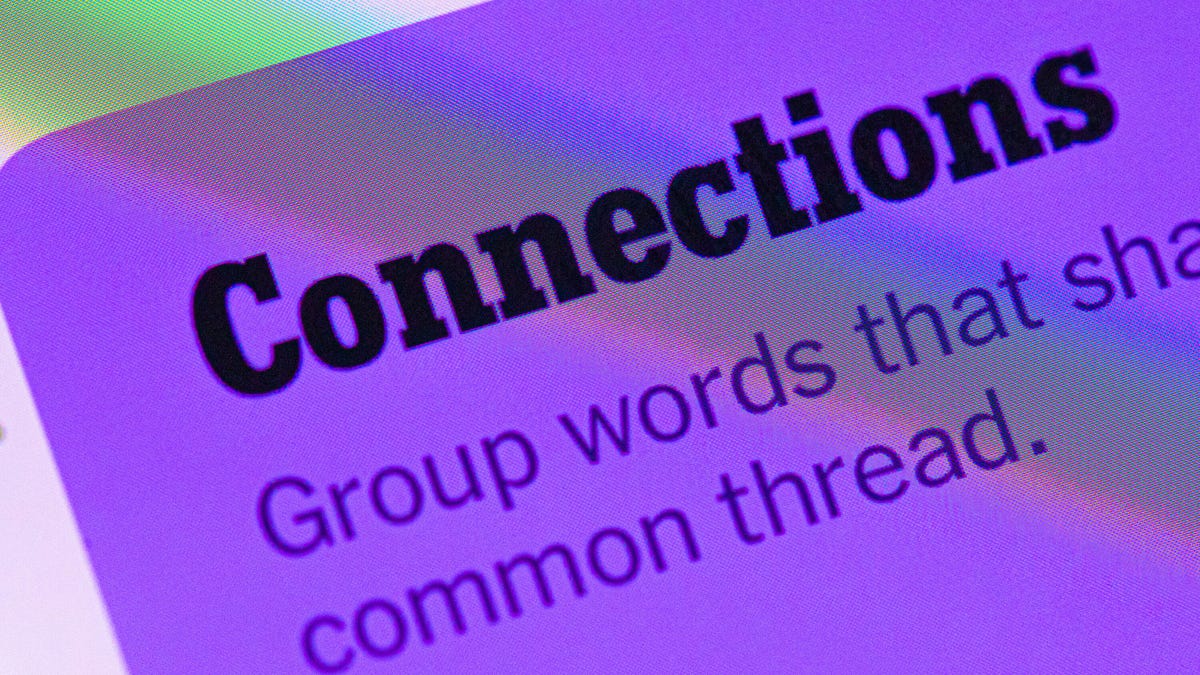
Looking for the most recent Connections answers? Click here for today’s Connections hints, as well as our daily answers and hints for The New York Times Mini Crossword, Wordle, Connections: Sports Edition and Strands puzzles.
Today’s NYT Connections puzzle is kind of tough. Ooh, that purple category! Once again, you’ll need to look inside words for hidden words. Read on for clues and today’s Connections answers.
The Times has a Connections Bot, like the one for Wordle. Go there after you play to receive a numeric score and to have the program analyze your answers. Players who are registered with the Times Games section can now nerd out by following their progress, including the number of puzzles completed, win rate, number of times they nabbed a perfect score and their win streak.
Read more: Hints, Tips and Strategies to Help You Win at NYT Connections Every Time
Hints for today’s Connections groups
Here are four hints for the groupings in today’s Connections puzzle, ranked from the easiest yellow group to the tough (and sometimes bizarre) purple group.
Yellow group hint: Cash out.
Green group hint: Chomp
Blue group hint: Walleye and salmon.
Purple group hint: Make a musical sound, with a twist.
Answers for today’s Connections groups
Yellow group: Slang for money.
Green group: Masticate.
Blue group: Fish.
Purple group: Ways to vocalize musically plus a letter.
Read more: Wordle Cheat Sheet: Here Are the Most Popular Letters Used in English Words
What are today’s Connections answers?
The yellow words in today’s Connections
The theme is slang for money. The four answers are bacon, bread, cheese and paper.
The green words in today’s Connections
The theme is masticate. The four answers are bite, champ, chew and munch.
The blue words in today’s Connections
The theme is fish. The four answers are char, pollock, sole and tang.
The purple words in today’s Connections
The theme is ways to vocalize musically plus a letter. The four answers are hump (hum), rapt (rap), singe (sing) and whistler (whistle).
Don’t miss any of our unbiased tech content and lab-based reviews. Add CNET as a preferred Google source.
Toughest Connections puzzles
We’ve made a note of some of the toughest Connections puzzles so far. Maybe they’ll help you see patterns in future puzzles.
#5: Included «things you can set,» such as mood, record, table and volleyball.
#4: Included «one in a dozen,» such as egg, juror, month and rose.
#3: Included «streets on screen,» such as Elm, Fear, Jump and Sesame.
#2: Included «power ___» such as nap, plant, Ranger and trip.
#1: Included «things that can run,» such as candidate, faucet, mascara and nose.
Technologies
Today’s NYT Mini Crossword Answers for Wednesday, Dec. 24
Here are the answers for The New York Times Mini Crossword for Dec. 24.

Looking for the most recent Mini Crossword answer? Click here for today’s Mini Crossword hints, as well as our daily answers and hints for The New York Times Wordle, Strands, Connections and Connections: Sports Edition puzzles.
Need some help with today’s Mini Crossword? I’m Irish-American, but yet 6-Down, which involves Ireland, stumped me at first. Read on for all the answers.. And if you could use some hints and guidance for daily solving, check out our Mini Crossword tips.
If you’re looking for today’s Wordle, Connections, Connections: Sports Edition and Strands answers, you can visit CNET’s NYT puzzle hints page.
Read more: Tips and Tricks for Solving The New York Times Mini Crossword
Let’s get to those Mini Crossword clues and answers.
Mini across clues and answers
1A clue: Wordle or Boggle
Answer: GAME
5A clue: Big Newton
Answer: ISAAC
7A clue: Specialized vocabulary
Answer: LINGO
8A clue: «See you in a bit!»
Answer: LATER
9A clue: Tone of many internet comments
Answer: SNARK
Mini down clues and answers
1D clue: Sharks use them to breathe
Answer: GILLS
2D clue: From Singapore or South Korea, say
Answer: ASIAN
3D clue: Large ocean ray
Answer: MANTA
4D clue: ___ beaver
Answer: EAGER
6D clue: Second-largest city in the Republic of Ireland, after Dublin
Answer: CORK
Don’t miss any of our unbiased tech content and lab-based reviews. Add CNET as a preferred Google source.


